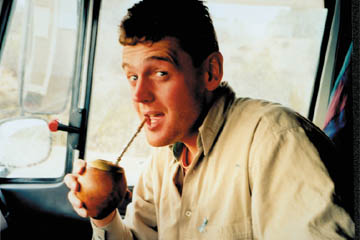
Tony enjoying a cool beverage.
Many people dream of traveling around the world. Only a few people get the chance — and even fewer circle the globe without the aid of an airplane.
Tony Robinson-Smith is one of those few.
Tony was living a fairly cushy life running an English school in Japan. But after five years, he was ready to shed his regimented lifestyle and tackle the world firsthand. What began as a study of a world map turned into a long, wiggly journey across hot sands, open roads, and stormy seas.
